For the second piece in this year’s series Francis and Jonathan discuss the Solemn Melody by Sir Henry Walford Davies. Rather like Nimrod that they did in the first tutorial of 2020, this could be a useful piece for the end of a funeral.
The work was originally scored for cello, strings and organ, so one would expect to aim for a broad melodic sweep when interpreting the piece for the organ alone.
Solemn Melody is one Walford Davies best known compositions
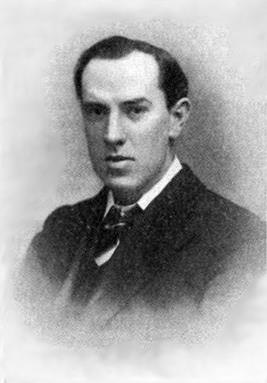
Walford Davies (1869–1941), like Elgar, was a prominent late Victorian and Edwardian composer, rising to succeed Elgar as Master of the King’s Music for the last seven years of his life. Although his music was immensely popular at the time, it is less commonly performed today, the Solemn Melody and the rousing RAF March Past being among his best-known compositions.
His output included two symphonies and a lot of major works for choir and orchestra, including an oratorio “Everyman” that was almost as popular as Elgar’s “Dream of Gerontius” at the time. His work for the early BBC is notable, Walford Davies having become a successful early broadcaster on classical music.
How to successfully perform Solemn Melody on the organ
Rather like Elgar’s “Nimrod” variation, discussed previously, successful performance of this Solemn Melody has a lot to do with managing dynamics successfully. The opening introduction starts with an ascending broken chord and needs a rapid rise and fall of dynamics.
Jonathan registers this on the full swell coupled to great diapasons, with a full pedal foundation down to 32 foot if possible. The swell box is gradually opened during the chord and the hands are split between the swell (LH) and great (RH.) The oboe is a useful adjunct to the foundation stops as the registration is gradually taken down during the joining section that follows.
The main tenor melody that was originally scored for cello is played on eight-foot great diapasons, and Jonathan points to the rich sound of groups of eight-foot flue stops drawn together. In this case he even allows himself a tasteful tremulant to give a little undulation to the tone, as a “doff of the hat” to the vibrato of a stringed instrument.
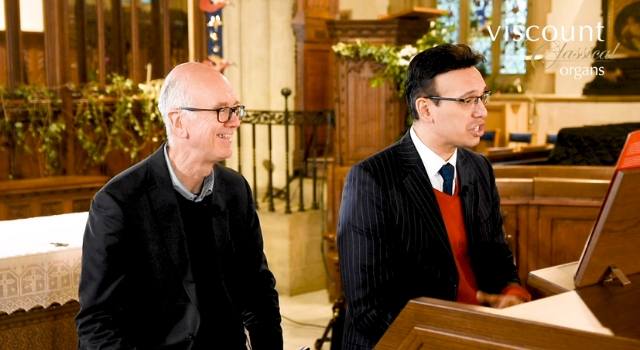
When we start the second “verse” the tune moves to a fuller organ played on the great diapasons of eight and four foot coupled to a medium swell (not yet full in this case) with both eight foot reeds active, but no mixtures yet. This gradually builds to double forte, where one would hope to exploit most if not all of the resources available.
Towards the end there is a graded diminuendo, which takes a bit longer than the rapid dynamic drop at the end of “Nimrod”. Jonathan has time gradually to bring the great registration down step by step, closing the box on the swell and using the swell pistons to reduce the fullness even further, before the final rising arpeggio on a great flute.
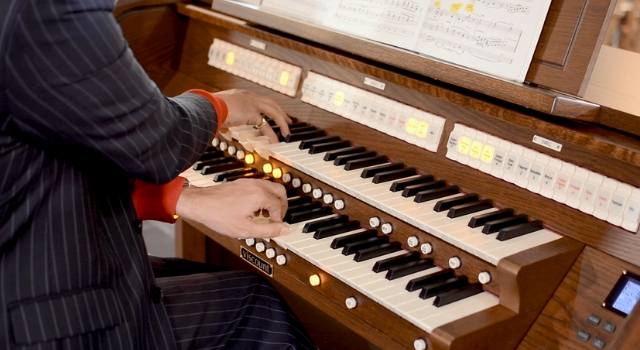
Organ Performance Tutorial for Wedding and Memorial Music
The organ performance tutorials for 2020 concentrate on the playing of organ arrangements for weddings and memorial services. You can read more about this wedding and memorial tutorial series.
Our previous years’ tutorials can be found on the organ music blog or go directly to the Organ Registration Tutorial (2019) or Choral Organ Accompaniment Series (2018).
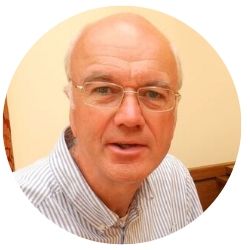
I’m a retired academic, with a background in music and audio engineering. I’m currently a consultant for Viscount & Regent Classic Organs, as well as being a freelance organist, including a role as organist/choirmaster at St Mary’s, Witney. I sing bass with Oxford Pro Musica Singers and the Cathedral Singers of Christ Church, Oxford.
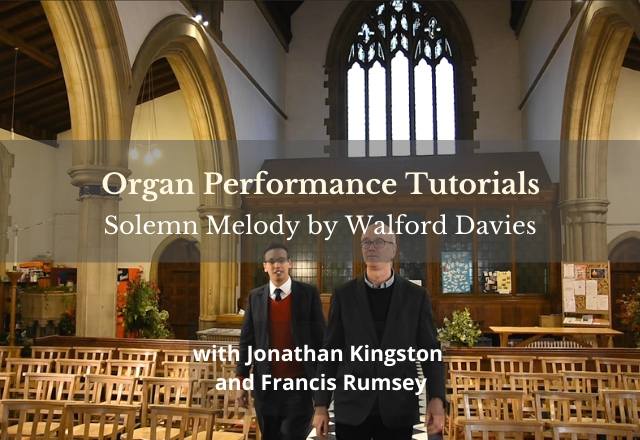



Thank you for that, Francis, Jonathan and Adrian!
A fine and broad performance!
Walford Davies was from Oswestry in Shropshire. I had the great privilege of being one of Dr. Harry Gabb’s pupils and he gave a superb recital in the Parish Church there whilst I was Organist there – over two hundred attended!
However, Dr. Gabb insisted also that we should make a pilgrimage to Walford Davies’s house – at that time, The Walford Cafe! Walford Davies, he recalled, had been the consultant when he was appointed to Llandaff Cathedral in 1937.
Great men in the wonderful English Church Music tradition!